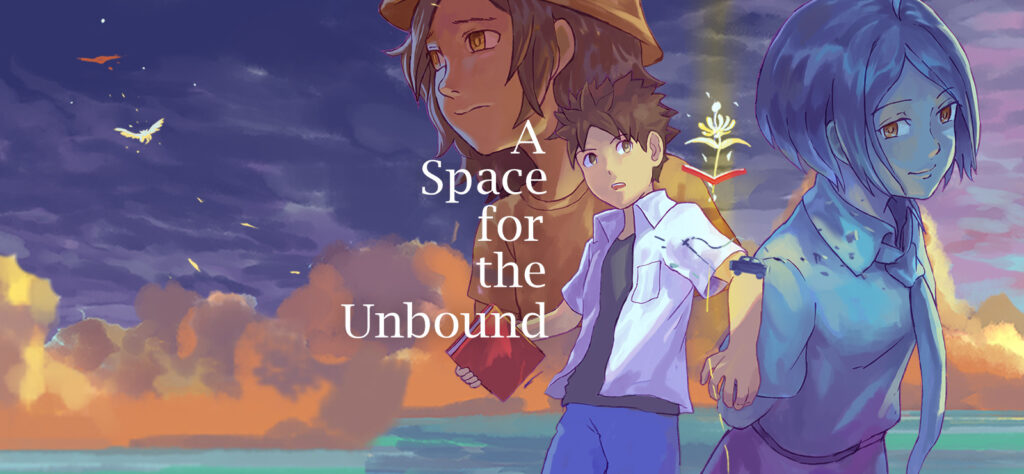
Image Source: Mojiken Studios
A Space for the Unbound’s Triumphant Last Act Depicts Mental Health Issues with Care
[Content Warning: This article contains discussion of depression, suicidal ideation, and self-harm, as well as spoilers for A Space for the Unbound]
Representation of mental health issues in pop culture has a fraught history, frequently parroting stigmatizing misnomers or wielding mental illness as a prop for shock value. For instance, it’s a long-held tradition for psychodramas, thrillers, and horror flicks to build towards sudden revelations that the events we’ve witnessed are a figment of the protagonist’s imagination, urging us to ogle at, pity, or fear these characters. A textbook example of this is Shutter Island, although there are many others like Jacob’s Ladder or Black Swan, just to name a few. Video games have not fared much better, delivering near-identical plot beats that feel directly plucked from movie scripts and literary tropes. For instance, Manhunt 2 wholesale lifts Fight Club’s big reveal to lackluster effect. Although not every story needs to engage with these issues in a realistic way, and there is space for genre offerings that explore these topics, the repetition of these narratives in popular culture casts those with mental health problems as either dangerous or objects of derision, which has helped reinforce existing stigmas.
While it could be argued that things are moving towards a place of better understanding as negative portrayals are challenged, fumbled depictions still feel like the norm, particularly when it comes to third-act twists that unearth some “shocking” truth about a character’s psychology. However, A Space for the Unbound – a recently released indie game from Mojiken – succeeds where many other narratives have failed, delivering a late reveal that engages with depression in a nuanced and thoughtful fashion.
At least on the surface, its story follows Atma, a high schooler living in a picturesque Indonesian town in the ‘90s. Although he and his girlfriend Raya are nearing graduation, the calming pastels of their hometown capture the sense that this moment will somehow never end. However, despite the scenic vistas, it’s hard to shake the feeling that there’s something off about this exceedingly nostalgic portrait of youth. (From here on, there will be spoilers for most of A Space for the Unbound’s plot, including its ending.)
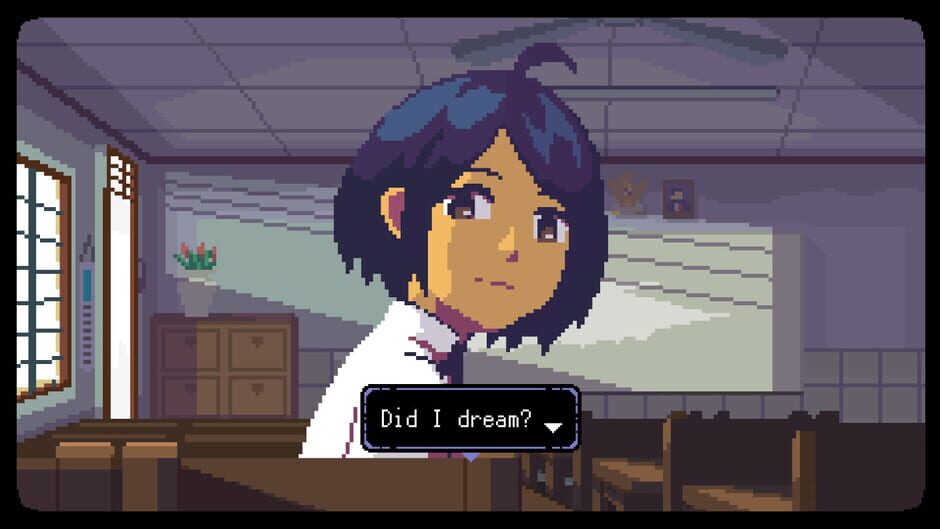
Atma frequently finds himself in places that don’t quite make sense, as gaps in his memory and other leaps of logic – such as inexplicable magical powers – create a dreamlike atmosphere. Eventually, things reach a fever point when Raya runs into those who previously wronged her, and she begins erasing her former bullies from existence. As the world continues to shatter, and their surroundings become increasingly uncanny, Atma confronts Raya, and it is confirmed that this world is not literally “real.” The actual Raya is unconscious in a hospital after surviving a suicide attempt, and the story we witness can either be interpreted as her dream or a symbolic depiction of her mental state as she works through her feelings and past traumas.
While on its face, this sounds like the exact kind of lurid twist found in so many tales about people struggling with mental illness, this depiction runs counter to these narratives in numerous thoughtful ways. One crucial difference is that when we learn the full truth, it isn’t framed as a shocking moment but as a natural extension of what came before. Between Atma’s amnesia, the abundance of magical powers, and many odd coincidences, it is apparent upfront that things are not what they seem. Moreover, we witness repeated flashbacks between Atma and a young girl named Nirmala, who has the same hair color as Raya, implying a connection between the two. Eventually, we discover that Nirmala and Raya are the same person, and that Atma was a boy who had once encouraged Nirmala to pursue art, but ultimately drowned while saving her from a sudden storm. This doesn’t come across as a violent reveal meant to villainize Raya, but a solemn clarification for why she wants to construct an idealized version of her past. Essentially, the framing here is less about suddenly discovering Raya’s mental state, and more about exploring how her current state of guilt, grief, and suppression came to be.
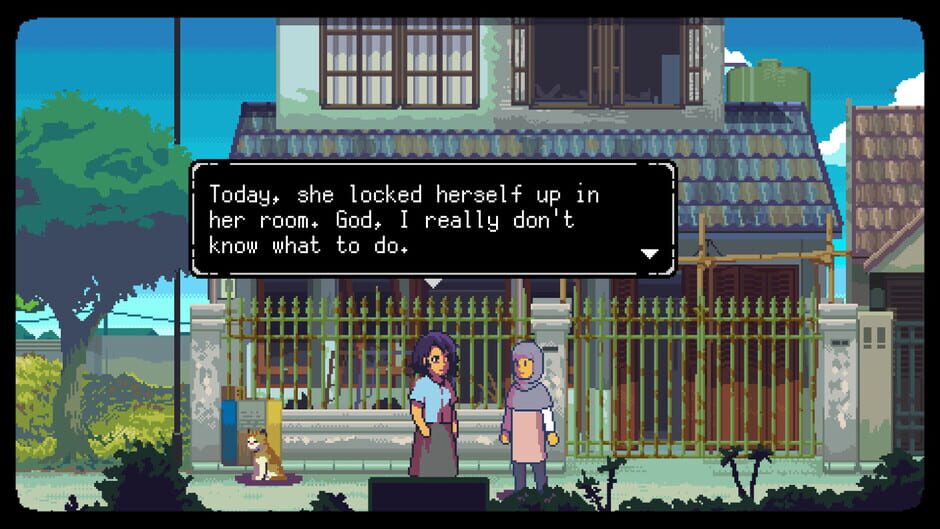
This final stretch, where we move past Raya’s idyllic recreation of her time in high school and into her raw feelings, is where it becomes clear this story is examining these issues from a place of empathy and nuance. We eventually see the many things weighing on her: the memories of her physically and emotionally abusive father who stifled her creative impulses, the guilt that Atma drowned while saving her, and painful remembrances of high school bullies. We witness how all these factors accumulated and that even years removed from finishing high school and after she and her mother distanced themselves from their abuser, these recollections still lingered. It becomes clear that the “perfect” world she creates in her dream is a metaphor for how it can be incredibly difficult to accept and move on from the past.
At this point, Raya’s feelings are conveyed via self-critical internal monologues that candidly depict how depression can amplify feelings of hopelessness. Trapped in her own headspace, mentally constructed versions of her family and acquaintances berate her, communicating her doubts. We come to understand how even though she is far removed from these events, Raya’s bad memories still replay ad nauseam, representing how it can be incredibly difficult to move past these types of traumatic experiences. These sequences capture how these kinds of negative thoughts can create an endless feedback loop and dominate a person’s self-image, pushing them toward reclusion.
But, we also see how Raya begins to heal as she opens up to the “fake” Atma. We learn how she used to love creating art and writing stories, but the death of the “real” Atma and pressure from her father made her bury this side of herself as she attempted to become a model student. As Atma convinces her to embrace this lost aspect of her identity, it sets up a deeply cathartic climax.
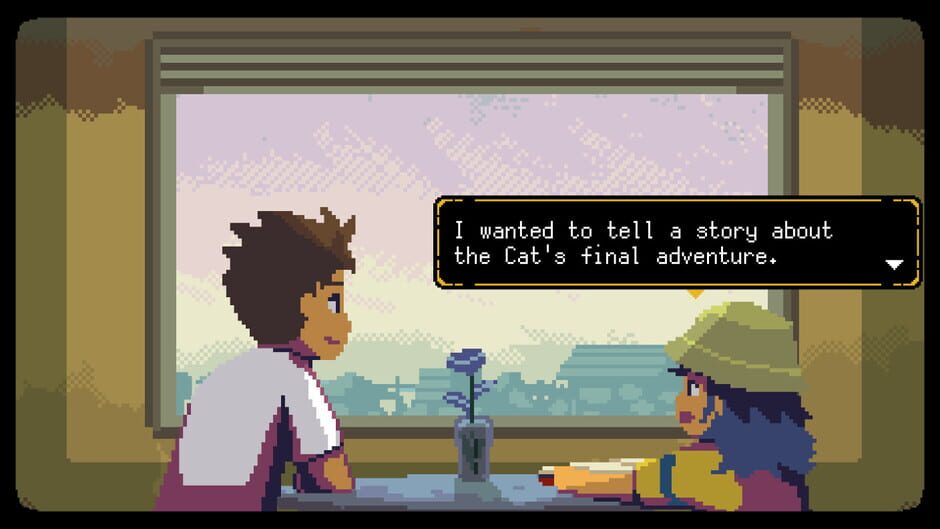
One element that makes this last stretch so affecting is how it passes player control to Raya. At first, you’re playing as Atma, as you have been the whole game, while he helps her find this lost part of herself. But then control passes to Raya as she confronts a gauntlet of specters from her past, symbolizing that she’s beginning to reclaim agency and accept that others don’t define her worth. It’s a thematically resonant moment that makes excellent use of its chosen medium, passing the torch between these characters to highlight Raya’s growth.
The conclusion manages to avoid coming across as saccharine or condescending while still fully embracing the possibility of things changing for the better. As Raya finally reunites with the past version of herself, she explains what makes it possible to keep going, referencing moments of kindness and the little things that can help living with severe depression and anxiety, like the joy of sitting down to write or remembering that people care about you. As this dream world crumbles, the blues and yellows of the fantastical pixel art combine with a swelling insert song, recurring imagery crashing down as our protagonist punches through the clouds of this imagined space and reaches a semblance of self-affirmation. It’s a stunning sequence that captures what Raya describes as her “will to stay here, to keep living.” While this narrative doesn’t shy away from depicting her pain, there is tremendous kindness in how it asserts that things can get better, and through evocative imagery, nuanced characterization, and well-considered mechanics, its message comes across as more than just a rote platitude.
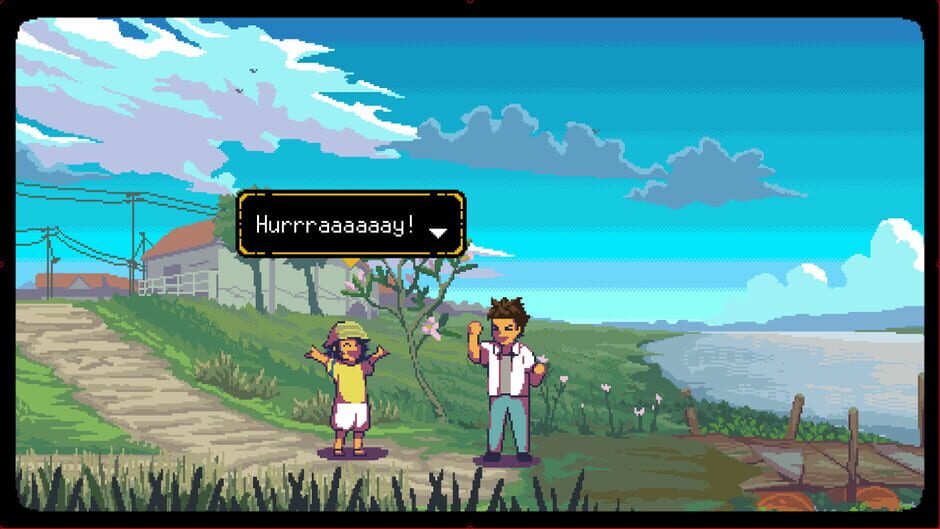
Many stories utilize final act twists about their main character’s mental state to shock the viewer, wielding this premise to cash in on commonplace fears about becoming unmoored from reality. While A Space for the Unbound initially appears to have a similar reveal and temporarily positions Raya as an antagonist who is unable to give up her false world, these developments are used to accomplish the opposite of what these tropes usually follow through on. Instead of otherizing or stigmatizing Raya, the last hour of this story fully delves into her emotional state and thoughts, visualizing her self-doubt and depression with striking symbolism.
In an interview with Rock Paper Shotgun, the game’s director, Dimas Novan, mentioned how their team worked with consultants to ensure their depiction of depression and anxiety was respectful.
“Judging by the people who played the demo, people seem very on board with what we’re trying to bring to the table. I would be lying if there isn’t extra pressure, that’s why we consulted other professionals for their input to help,” Novan said. “After doing some writing we realized that everyone’s experience regarding anxiety and depression is unique to each person. To avoid losing focus on what we do want to tell, A Space For The Unbound’s overall story is focused on one person’s journey.”
This effort to capture what these conditions can be like paid off. Details like how Raya’s trying experiences linger or how she finds herself in negative spirals communicate what it can be like to live with these forms of mental illness. And most importantly, we also see how she eventually works towards recovery and how these traumas don’t define who she is as a person. After waking up in the hospital, Raya reconciles with high school acquaintances as she reaffirms her decision to embrace her long-suppressed creativity.
Throughout the story, we witnessed multiple adults alter their lifepaths, either switching careers or reuniting with abandoned passions. Raya’s commitment to doing the same highlights this narrative’s belief that it’s never too late for this kind of change. Between its grounded communication of its protagonist’s internal pain, acknowledgment of the difficulty of living with these kinds of mental health conditions, and its soaring affirmation that healing is possible if given proper support, A Space for the Unbound’s powerful finale deserves to be celebrated for presenting mental health issues with authenticity, care, and impact.
If you like what we do here at Uppercut, consider supporting us on Patreon. Supporters at the $5+ tiers get access to written content early.






I really enjoyed this take! One of the reasons I really loved this game was because Atma never judged or lost patience with Raya, despite how out of controls things got in his world. Knowing that this was only Raya’s memory of Atma, it’s really hopeful and beautiful that a small part of her was fighting back against very dark and negative thoughts, giving herself the space to heal and grow. She knew it’s what Atma would want for her.